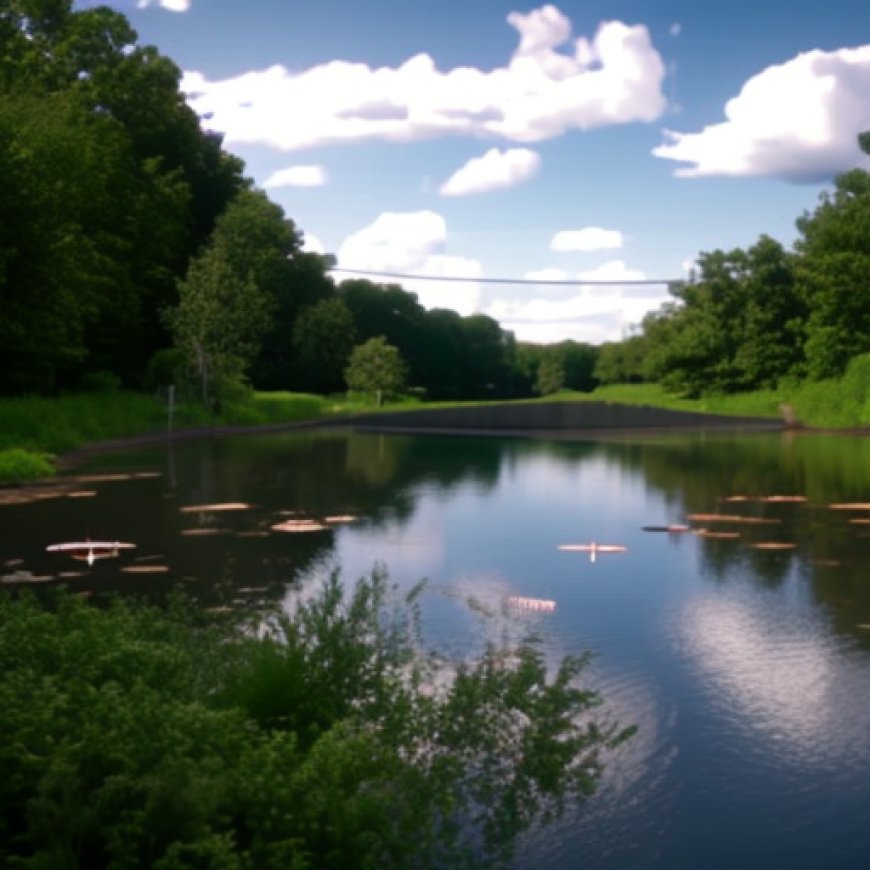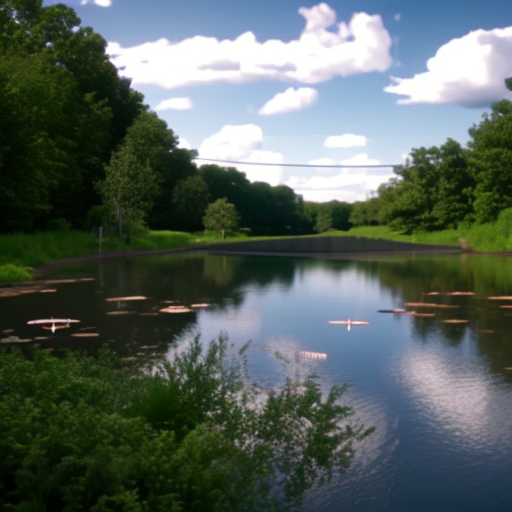Wildwood fees to rise 20 percent to pay for new wastewater treatment plant
Wildwood fees to rise 20 percent to pay for new wastewater ... Villages-News


Sustainable Development Goals (SDGs) and the Cost of Rapid Growth in Wildwood

Introduction
A major concern arising from the rapid growth in Wildwood is the potential cost of up to $200 million for a new wastewater treatment plant. This article highlights the presentation made by Ben Fries, vice president of CPH, who is responsible for managing the treatment plant upgrades.
Financial Implications and Sustainable Development Goals
To address the increased operating expenses associated with the upgrades, the commissioners have approved a 20 percent fee hike. This fee increase is part of a larger plan to raise wastewater fees by 20 percent annually through 2028. The aim is to generate the necessary funds to support the sustainable development goals of Wildwood.
- Goal 6: Clean Water and Sanitation
- Goal 9: Industry, Innovation, and Infrastructure
- Goal 11: Sustainable Cities and Communities
Expedited Timetable and Capacity Issues
The city’s wastewater flows have been growing at a faster rate than anticipated, necessitating an expedited timetable for the new plant. Over the past two years, flows have increased by 58 percent, reaching an average daily rate of about 2.2 million gallons in the first half of this year. At this rate, Wildwood’s current treatment plant will reach its capacity by early 2025. By 2030, the city could be dealing with a daily flow of 5.6 million gallons.
Growth and Infrastructure Demands
The significant growth in population and property tax revenue, driven by home construction, apartment projects, and retail development, has placed a heavier demand on the city’s infrastructure, particularly the 30-year-old wastewater treatment plant.
Upgrade Plan and Construction Challenges
CPH’s plan involves upgrading the existing treatment plant to increase its capacity and constructing a new plant adjacent to it on city-owned property. However, there have been challenges with the upgrade process, such as mismatched piping. The new plant will utilize common walls to minimize the need for extensive piping and valves. It is recommended that construction on the back end of the new plant commence soon to address hydraulic issues.
Cost Considerations and Alternative Solutions
The estimated cost for building a new plant with a capacity of 6 million gallons daily is $198 million, equating to $33 per gallon. To reduce costs, an alternative solution is to build two treatment systems instead of three in the new plant while continuing to operate the existing plant. This approach could save $20 million to $50 million in construction costs and provide a capacity of 5.5 million gallons daily. However, it should be noted that effluent from the existing plant would not meet the latest advanced wastewater treatment standards without additional expensive upgrades.
Future Expansion and Effluent Management
Design plans will be completed for an 8-million-gallon daily capacity to allow for quick construction of two additional treatment systems if needed in the future. Alongside increased capacity, the city must also identify destinations for the additional effluent. Currently, most of it goes to The Villages for recycled water used in lawn watering, but there may be a limit on how much is needed. Land treatment is being considered as another option.
Financing and Recommendations
To finance the treatment plant upgrades, it is suggested that $114 million be obtained through 30-year revenue bonds and $36 million through 20-year loans from the state. The current interest rates for revenue bonds and state loans are 4.3 percent and 2 percent, respectively. Additionally, a four-year plan of 20 percent increases in wastewater rates is proposed to cover the higher operating expenses.
SDGs, Targets, and Indicators
-
SDG 6: Clean Water and Sanitation
- Target 6.3: By 2030, improve water quality by reducing pollution, eliminating dumping and minimizing release of hazardous chemicals and materials, halving the proportion of untreated wastewater, and substantially increasing recycling and safe reuse globally.
- Indicator 6.3.1: Proportion of wastewater safely treated
-
SDG 11: Sustainable Cities and Communities
- Target 11.3: By 2030, enhance inclusive and sustainable urbanization and capacity for participatory, integrated, and sustainable human settlement planning and management in all countries.
- Indicator 11.3.1: Ratio of land consumption rate to population growth rate
- Indicator 11.3.2: Proportion of cities with a direct participation structure of civil society in urban planning and management that operate regularly and democratically
Analysis
The article discusses the need for a new wastewater treatment plant in Wildwood due to the rapid growth of the city. This issue is connected to SDG 6: Clean Water and Sanitation, which aims to ensure access to clean water and sanitation for all. The target under this SDG that can be identified based on the article’s content is Target 6.3, which focuses on improving water quality by reducing pollution and treating wastewater. The article mentions that the city’s wastewater flows are growing faster than anticipated, and the current treatment plant would reach capacity in early 2025. This indicates the need for upgrading the treatment plant to increase its capacity and treat the increasing wastewater flows. The indicator that can be used to measure progress towards this target is Indicator 6.3.1, which measures the proportion of wastewater safely treated.
The article also highlights the impact of the city’s growth on its infrastructure, particularly the wastewater treatment plant. This issue is connected to SDG 11: Sustainable Cities and Communities, which aims to make cities inclusive, safe, resilient, and sustainable. The target under this SDG that can be identified based on the article’s content is Target 11.3, which focuses on enhancing sustainable urbanization and human settlement planning. The article mentions the need for upgrading the treatment plant and finding destinations for the additional effluent generated by the city’s growth. This indicates the importance of integrated and sustainable urban planning and management. The indicators that can be used to measure progress towards this target are Indicator 11.3.1, which measures the ratio of land consumption rate to population growth rate, and Indicator 11.3.2, which measures the proportion of cities with a direct participation structure of civil society in urban planning and management.
SDGs, Targets, and Indicators
| SDGs | Targets | Indicators |
|---|---|---|
| SDG 6: Clean Water and Sanitation | Target 6.3: By 2030, improve water quality by reducing pollution, eliminating dumping and minimizing release of hazardous chemicals and materials, halving the proportion of untreated wastewater, and substantially increasing recycling and safe reuse globally. | Indicator 6.3.1: Proportion of wastewater safely treated |
| SDG 11: Sustainable Cities and Communities | Target 11.3: By 2030, enhance inclusive and sustainable urbanization and capacity for participatory, integrated, and sustainable human settlement planning and management in all countries. | Indicator 11.3.1: Ratio of land consumption rate to population growth rate |
| Indicator 11.3.2: Proportion of cities with a direct participation structure of civil society in urban planning and management that operate regularly and democratically |
Behold! This splendid article springs forth from the wellspring of knowledge, shaped by a wondrous proprietary AI technology that delved into a vast ocean of data, illuminating the path towards the Sustainable Development Goals. Remember that all rights are reserved by SDG Investors LLC, empowering us to champion progress together.
Source: villages-news.com

Join us, as fellow seekers of change, on a transformative journey at https://sdgtalks.ai/welcome, where you can become a member and actively contribute to shaping a brighter future.







